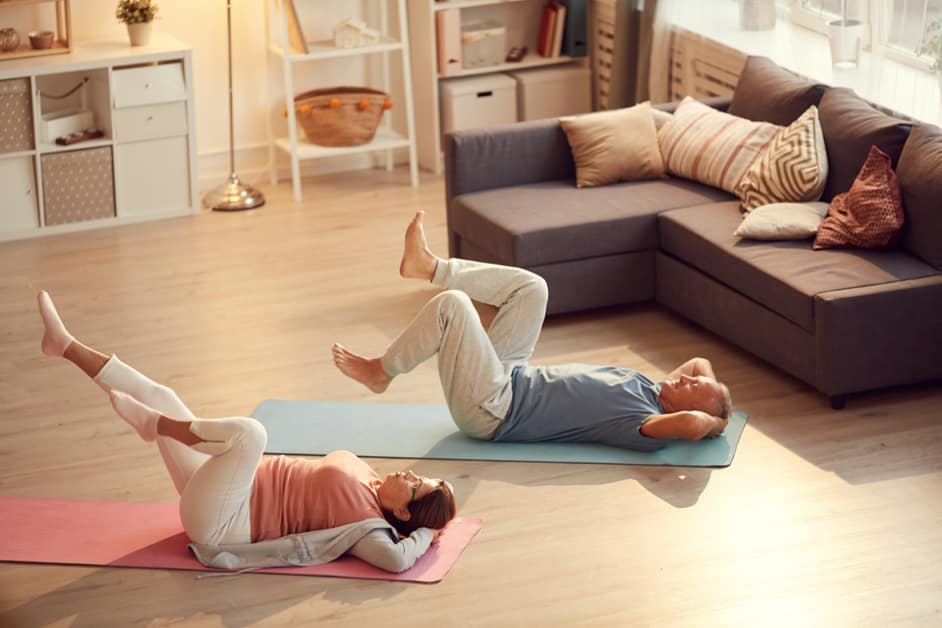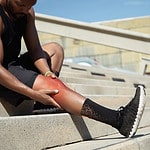Introduction
Knee overuse injuries are caused by physical activities like running, jumping, and lifting. This makes your life painful. But, there are exercises that help reduce the knee pain and improve flexibility without causing more harm. These exercises vary from low to high impact activities, like yoga, pilates, and strength training.
Yoga helps you become more flexible and balanced. Pilates strengthen the muscles around the joint for better support and stability. Strength training builds up the tired muscles. Depending on your recovery phase, there are different exercises to reduce pain without overloading the knee.
This guide covers various options for addressing overuse injuries. It includes:
- Yoga poses
- Pilates movements
- Balance drills
- Postural corrections
- Advice on how to do these exercises safely
Yoga
Yoga – a great way to help ease or prevent knee pain caused by overuse. It gets your entire body going, and the twisting and stretching exercises can improve mobility and enhance the muscles around your joints. Also, it can help you de-stress, which can have a beneficial effect on chronic pain. Yoga poses also open up your hips, which reduces the pressure on your knee joint.
Warrior Pose
The Warrior Pose is a well-known yoga posture. It helps fortify the thighs and opens up the hips. This special exercise is great for people with overuse knee pain. It increases flexibility, strengthens muscles, and improves range of motion.
Begin in a standing position with feet four to five feet apart. Turn the right foot out 90 degrees and angling the left foot slightly inward. With arms parallel to the floor, bend the right knee or “lunge” until it forms a right angle shape. The front thigh should be parallel to the ground, in line with the ankle. The back leg should be straight, but not locked. Keep both hips facing forward, so as not to strain knee ligaments or cartilage tissue.
Lift your arms above head while keeping them straight, palms facing each other. Gaze at a fixed point with steady breath. Slowly drop into a deeper lunge if able, without compromising core support and leg stability. Hold for five breaths before releasing back into mountain pose. Switch sides for another set.
Half Moon Pose
Half Moon Pose, also known as Ardha Chandrasana, is often used in yoga series. It helps to strengthen the legs, engage the abdomen and spine, and relieve overuse knee pain.
Start by standing with feet together and arms out at shoulder height. Inhale and sweep the arms up, until they’re above you in Half Moon Pose, palms touching. As you raise the arms, kick one leg back, keeping both feet grounded on the mat.
Engage the abdominal muscles and keep an active awareness of your body. Roll the heel back evenly on the mat. Make sure each movement is from within (not chin), and hold each side with long breaths.
Use exhales to deepen into any area that’s ready for challenge or refinement without compromising extension or strength. When done, take a few moments to enjoy stillness before transitioning to the next posture.
Chair Pose
Utkatasana, or Chair Pose, is a standing yoga move. It strengthens the lower body and gives relief from knee pain. It helps keep or regain joint range of motion. So, it’s key for those with chronic knee issues.
Stand on the mat. Put feet wider than shoulder-width apart. Point toes out to make sure knees are over ankles. Inhale and raise arms overhead. Palms face each other. Reach fingers up and press feet flat. Find length in spine. Keep chest open and up.
Start to lower down as if sitting in a chair. Keep hands level with each other. Feel knees press together as you go down. Shift weight forward into front foot and heel. Stay here for 5 breaths. Come back up slowly while inhaling.
Pilates
Pilates? Yes! If you’re looking to build strength, flexibility and mobility in your knees, it’s a great choice. If you suffer from overuse knee pain, then Pilates is the way to go! It can help stretch and strengthen the muscles around your knees, aiding in pain management.
In this section, you’ll learn more about the many benefits of Pilates for overuse knee pain. Plus, we’ll show you some of the most beneficial exercises:
Bridge Pose
Bridge pose is an energizing and strengthening exercise done in Pilates. It works your core, glutes, and hamstrings. You can do it with or without resistance bands.
Start by lying on your back with arms out like a T. Bend both legs. Keep feet close to glutes without causing discomfort. Feet must stay firmly planted throughout.
Inhale deeply. Draw up pelvic floor. Lift spine off the mat, so there’s a straight line from shoulder blades to knees. Pulse up and down over multiple breaths, engaging your core. As you get better at Pilates, you can hold the pose for longer.
You can add components like single leg variation or extra lifting, for deeper contraction. With each breath, be aware of each move. This can help you achieve desired outcomes safely.
Single-Leg Circle
Single-leg circles are a great way to target one leg. You exercise both core and leg muscles. Start on your back. Extend one leg straight up. Bend the other leg with the foot flat on the floor. Keep legs 12 inches apart. Reach for inner thighs. Pulse up to starting position. Aim for 6 reps per side. Move slow and controlled. No momentum. Pause at each end of circle. Squeeze glutes. Use abdominals. Pulse up into tabletop. Let out long exhale. Reach for toes and back up. Hold for two full breaths. Switch legs. Maintain even strength balance.
Wall Squat
The Wall Squat is a great way to make your gluteals, quadriceps, and hamstrings stronger. It’s best done with an exercise ball, or just sitting against the wall with your thighs at a 90 degree angle.
- Start by taking slow deep breaths. Relax your lower body. Keep your lower back flat against the wall, and your upper body tall. Relax your shoulders, and keep your chest up and chin up. If you’re using a ball, slightly tuck your back.
- To make it harder, slowly lower into the squat on each exhale. Keep your core muscles engaged with each breath. If you feel any pain, stop immediately and talk to your doctor or physical therapist for personalized instructions.
Before beginning any exercise program or activity, check with your physician/physical therapist.
Strength Training
Exercising with overuse knee pain? Strength training is the way to go! It builds muscles around your knee and can help reduce pain. Plus, it provides long-term health benefits.
Let’s explore exercises that strengthen your knee:
Step-Ups
Step-ups are awesome for adding intensity to leg workouts! This two-part exercise boosts agility, balance, and strength. It also works the major muscles in the legs.
To do a step-up, stand on a platform or box with one foot. Make sure your weight is over the foot on top of the box. Bend your non-working leg slightly. Push through the heel of your working leg to lift yourself onto the platform. Keep both feet on the box for one full second. Then, lower yourself off the box. Keep your spine straight. Don’t arch or round it. Keep good posture! Do 8-10 reps with both legs for 1 set.
Remember: form is key! Don’t sacrifice proper form for heavier weights or more reps. With proper form, step-ups can be used to train for strength, power, and endurance.
Leg Press
The Leg Press is a great exercise to strengthen your ankles, knees, and hips. It’s perfect for those with overuse knee pain as it helps to improve strength and stability. It’s done on a machine which has two foot plates for your feet and a lever arm with weights attached.
To start, position your feet about shoulder-width apart and at chest level. Move the lever arm away from you using your legs in a controlled way until your legs form a 90-degree angle. Hold this position for one second then push back up with your legs, while using your hands for support if needed. Keep your knees in line with your toes throughout the movement. Don’t let them turn out or move towards each other or the machine.
Move slowly and don’t Hyperspeed Motion, which is moving too quickly through reps. Do 8-10 slow and controlled repetitions with proper form for best results and to avoid injury or overuse knee pain:
- Position your feet about shoulder-width apart and at chest level.
- Move the lever arm away from you using your legs in a controlled way until your legs form a 90-degree angle.
- Hold this position for one second then push back up with your legs, while using your hands for support if needed.
- Keep your knees in line with your toes throughout the movement.
- Don’t let them turn out or move towards each other or the machine.
- Move slowly and don’t Hyperspeed Motion.
Lunges
Lunges are an excellent strength exercise that targets multiple muscles in the lower body. Step forward with one leg, bend your knees, and lower your body until your front thigh is parallel to the ground. Push up through your feet to stand.
Benefits of doing lunges include improved coordination, balance, muscular endurance, and increased strength in your glutes, hamstrings, and quadriceps. It can also be a great form of cardio if you do them faster. Doing them with proper form is key to avoiding injury and getting the most from this workout.
Beginners can try stationary and walking lunges. As you progress, you can add weights or resistance bands to increase intensity. Other lunge variations include lateral lunges and curtsy lunges that target outer hip muscles which are important for balance and mobility.
Lunges don’t take up much time or special equipment, but they can give you amazing results!
Cardio
Treating overuse knee pain? Cardio is key! It increases circulation, reducing inflammation and pain. Plus, the muscles, tendons and ligaments around the knee get stronger.
What are the best cardio exercises? Let’s find out!
Swimming
Swimming is a great, low-impact way to take the pressure off your knees. Plus, it’s a full body workout! The water helps build muscle around the knee joint and can help reduce pain. The heat of the water also relaxes your muscles, and boosts circulation, making movement easier.
For the most benefit, swim slowly for 15-20 minutes. Start with shorter sessions if you’re new or coming back from an injury. Keep good form to protect your joints. And make sure the pool is warm enough so your tendons stay flexible while exercising. Too cold and it can put you at risk of injury.
Cycling
Cycling is a great exercise for overuse knee pain. It is low impact and can reduce joint pain and stiffness. Don’t do too much too soon – start at a low intensity and gradually increase speed and distance as your strength grows. Develop a year-round practice for the best benefits.
Invest in a quality stationary bike or join a spinning class at an indoor cycling studio. If you are cycling outdoors on a road bike, make sure the saddle is ergonomic and comfortable. Find models with adjustable height or have the bike professionally fitted. Try padded shorts made for cycling for extra cushioning and to avoid friction when pedaling. Platform pedals can help minimize pressure points if you often suffer from knee pain while biking outdoors.
Walking
Walking is a great way to get active and improve your knee strength. This can help reduce knee pain and improve mobility. Plus, regular walking can give you many heart health benefits.
If your knees hurt, start with a comfortable pace. When it gets easier, try adding hills or inclines to your route. Stand tall and alternate between heel striking and midfoot strides. This helps spread the load evenly. If walking outside isn’t possible, use a treadmill or step climber at home or the gym.
Conclusion
In conclusion, overuse pain is a warning! Rest and ice are the usual helpers to reduce inflammation and pain. However, physical exercise is still essential for long-term good health. Pilates and yoga, with low-impact, could be great activities for people with overuse knee pain. They focus on strength, stability, and flexibility.
Before engaging in any exercise program, speak to a doctor or physical therapist. They can give you a personalised plan to help you find relief from your knee pain.
Frequently Asked Questions
Q:What are the best exercises to relieve overuse knee pain?
A:The best exercises to relieve overuse knee pain are low-impact activities that focus on strengthening the muscles around the knee, such as yoga, Pilates, swimming, and water aerobics.
Q:How often should I do these exercises?
A:It is recommended to do these exercises at least three times a week for best results.
Q:Are there any other ways to help relieve overuse knee pain?
A:Yes, besides exercises, icing the knee, using a knee brace, and stretching can also help reduce knee pain and discomfort.





